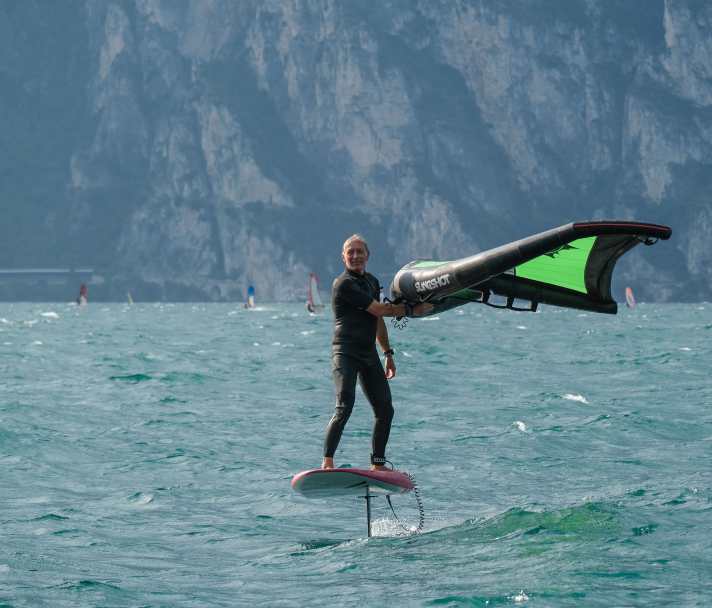
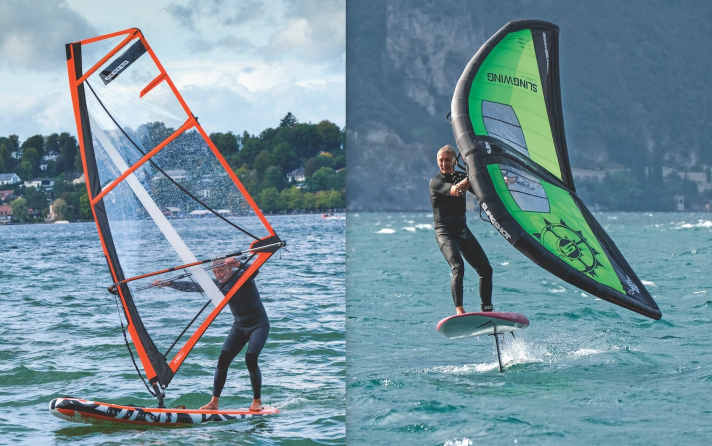
It sounds tempting:You're out paddling, the wind picks up, you pump up the wing in no time and casually surf back. This is possible for experienced windsurfers and/or kiters, but it's difficult to stay upright (i.e. not drifting with the wind) and a board with a large centre fin is a prerequisite. This is because the round edges on the SUP do not provide enough grip, and even the very small centre fins that are supplied with many "wind SUPs" usually only allow you to course crosswind. However, all-round and touring SUPs also come with boards with a centreboard or large centre fin (from Red Paddle, RRD, Starboard or Gunsails, for example).
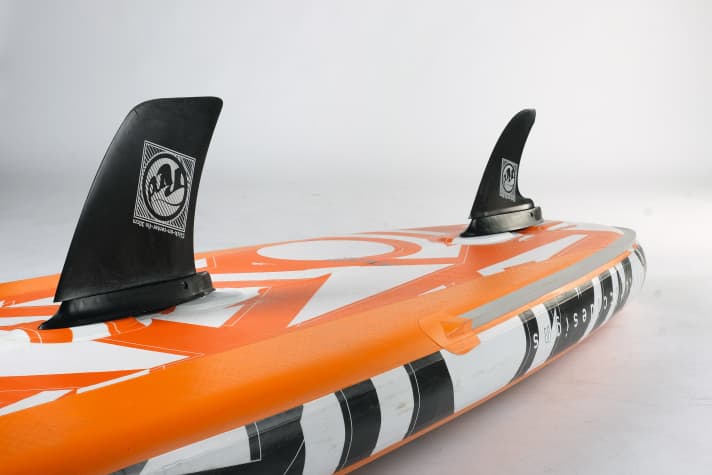
From about three wind forces the wing works on the foil
But the main problem is yet another: as long as there is enough wind for the wing to fly on its own, from an estimated wind force of around three, experienced windsurfers can also come back upwind, but even then the riding position does not really feel relaxed. And with a windsurfing sail, turning upwind is noticeably easier even then.
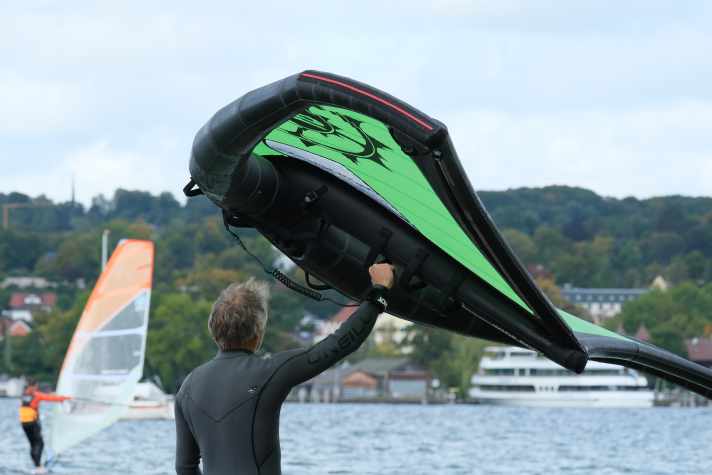
It gets much worse when the wind drops further, then the wing, regardless of type, must be held forwards and upwards by the long arm so that the wingtips do not drag in the water. This quickly evokes associations with "lifting a beer mug" or "painting the ceiling".
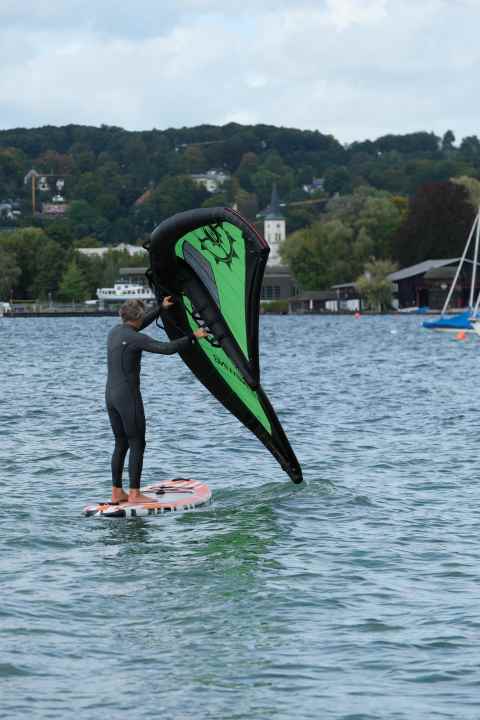
Even tougher was the case for our test person, who - with no windsurfing experience - was making his first attempts with both wing and sail. Visibly without any orientation as to how and where to hold the wing over or next to his body, he drifted inexorably downwind (with the wind).
Quite different with the feather-light "SUP Sail": On his wide board, our test person easily caught up the sail, somehow intuitively held it almost right into the wind and after half an hour was sailing safely back and forth without drifting and obviously having fun.

And the professional comparison? "With only four or five knots of wind, it's extremely arduous with the wing because you have to carry it in front of you. With a windsurfing rig, on the other hand, you simply lean on the fork in such conditions and 'chug' home in comfort," summarises our professional SUP tester. The special SUP sail is not much bigger than a folded wing in terms of packing size (multi-part mast, two-part boom) and, at 8.5 kilos including bag, is not particularly heavy either.

The foldable sail from RRD (Compact SUP Sail) is well suited for cruising in light winds and almost perfect for learning to windsurf. The fact that the boom and mast are also split is not noticeable when surfing, only the boom is not well sealed.
Wing + Foil = challenging
However, the wing development actually also comes from areas with a lot of wind and waves, Robby Naish and co. surf with it mainly in the waves, using the wing as an "auxiliary motor" when the wave is not pushing. "You should already be good at some kind of foil sport for this", said surf and SUP tester Nik in the last issue of surf magazine and we can only confirm that.
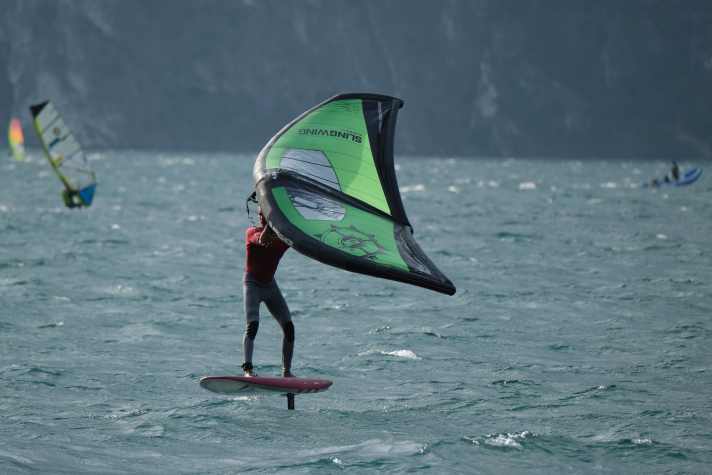
Because when the board lifts onto the foilyou should already know exactly what you have to do now, compared to windsurf foiling you simply lack the "third leg" - the connection via the mast base for board control. Holding the new "sail" correctly is not particularly difficult, but only if you don't have to think much about the board.
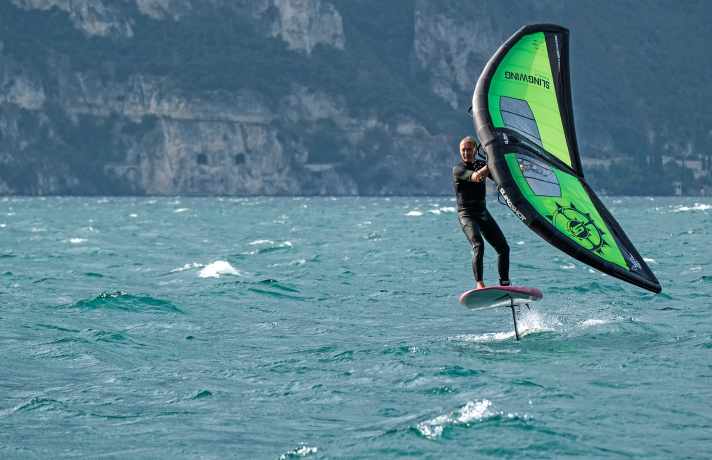
All beginnings are difficult
You start with the wing on your knees, so a large board with at least 130 litres is advisable.

The wing is often first next to the board "on your back" in the water and when pulling up, the wrong way round in your hand. With a bit of feeling, however, you can - still on your knees and with the wing "on the left" - clearly luff and then turn the wing sideways over your head. This will hardly work in a half wind. Now it's time to grab the wing in the flying position, drop down to a headwind and keep the wing nice and high. Waterman Brian Talma had the most important tip for us: "Always keep the front arm high". Then you can put one leg up and push yourself up into a standing position with a strong knee bend. That's the first step, but the acceleration to take-off speed is also very different to windsurfing. You drop a long way, look for any wave - no matter how small - and try to fan yourself with the wing.
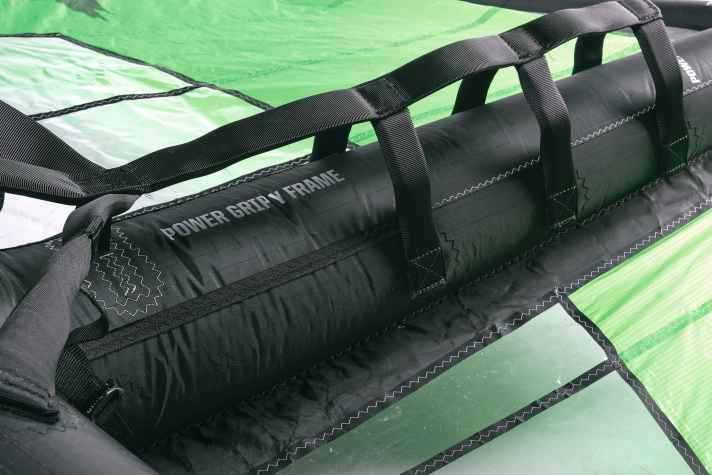
The "SlingWing" is rather taut in the hand and can be pumped almost like a windsurfing sail.
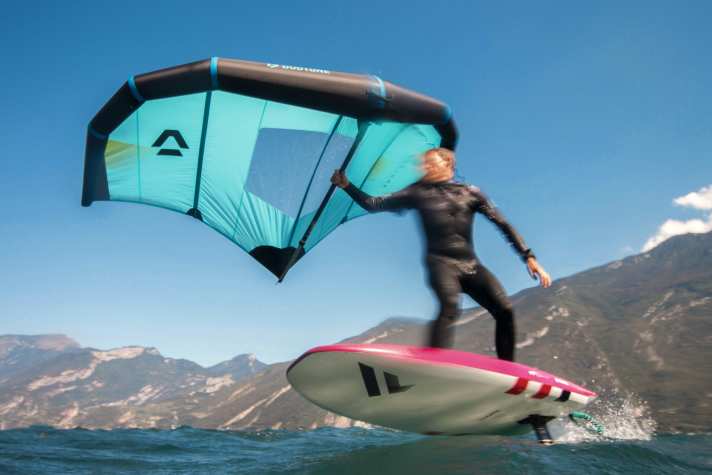
The duotone counterpart, which we were also able to try out, has a more bulbous and slightly softer feel. However, both wings require support from the legs to take off, as the take-off will only be successful with "pumping" with the board and a large surf wing under the board (not a narrow windsurf wing). The SlingWing we tested has numerous straps that are comfortable to grip and allow all the necessary grip positions. Unlike on the full-length tube, you can't slide with your hands, but have to let go briefly to change your grip - but you soon get used to this.
And the driving experience? "Very light, leisurely, sublime, like surfing across the lake on a longboard. Almost weightless, but also slower than with a windsurfing foil board." With the 4.2 SlingWing, we needed so much wind that all the other windsurfers were already gliding at full speed.
Conclusion 1:For SUPs without a foil, we think a windsurf sail is the better option. More relaxed, easier to learn and better for cruising upwind. The wing must be actively held high due to the large wingspan.
Conclusion 2: It's a different story on the foil board: You only go out with it when there's enough wind, you're higher up anyway and the position is much more relaxed. This is where the wing has what it takes to fill a gap: for all non-kiters, non-windsurfers who want to experience foil fever. Because one thing is certain: the feeling of flying over the water on a foil is incomparably cool - whether pushed by a wave, pulled by a kite, powered by a surf sail or motorised with a "wing".
